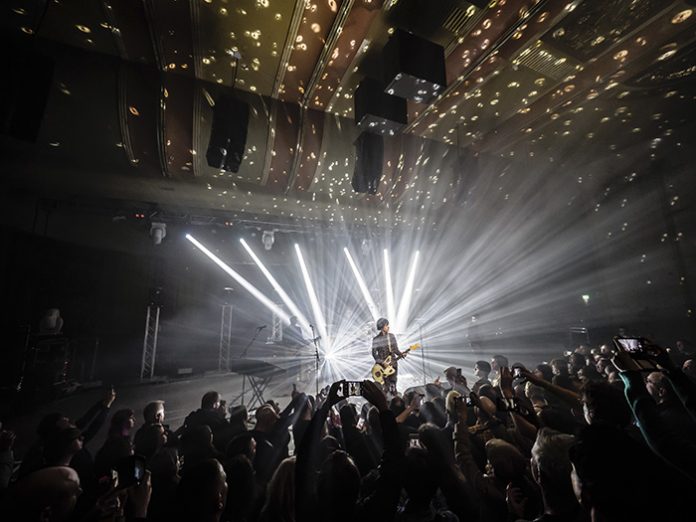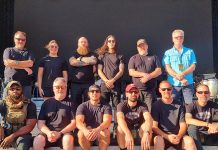
British Songwriter and Producer, Johnny Marr, has been on the road again, this time with his fourth solo studio album, Call the Comet.
The former founder and lead guitarist of The Smiths brought his latest UK tour to a stellar conclusion with a sold-out date at EartH (Evolutionary Arts Hackney), London. The venue which has the first permanent installation of L-Acoustics’ L-ISA Immersive Hyperreal Sound technology in a European live music venue.
For Marr’s FOH Engineer, Russ Miller, this was his first date with L-Acoustics L-ISA, and his post-show report was glowing. “I was blown away by it,” he said. “The separation is unbelievable, without it feeling like it’s separate sources. At sound check our backline techs were amazed: we had people just walking around the venue listening; it sounded the same from front to back and from side to side.”
Miller was contacted prior to the gig by EartH’s Alessandro Melchior, Sound Engineer, and was pleased to have a day in the venue before the show to work with some virtual sound-check material.
L-Acoustics L-ISA Immersive Hyperreal Sound technology used spatial audio processing to position up to 96 sound objects in three dimensions inside a performance space. The EartH L-Acoustics L-ISA Frontal system comprised of five hangs of seven Kara and a central 12 L-Acoustics Syva made up the surround system mounted along the walls. An overhead system of eight ceiling-mounted X8 completed the installation.
Miller decided to make the most of L-ISA and move to a more object-based mix for the show. “We’ve got the two-channel show to a point where input-wise and processing-wise, I have the kick, snare, bass, and lead vocals in the centre of the mix with effects specifically to give the lead vocal more width. I then push the guitars and ‘keyboard’ elements out to the side and use delays to clear space for the central elements.” He said: “This creates a stereo illusion and gives mono compatibility even when the speaker stacks are a long way apart, you get pseudo stereo without the old ‘disappearing guitar’ problem when a listener is right in front of one side. But switching to L-ISA and not having to jump through hoops to get the separation was amazing. With L-ISA, if you put the vocal in the centre, it’s in the centre and not a phantom centre.”
The Call the Comet tour also used DiGiCo SD11 consoles, sharing SD Rack I/O. In this instance, Miller’s FOH DiGiCo SD11 was connected to EartH’s in-house DiGiCo SD12, giving him more real estate to play with and allowed him to get creative with L-Acoustics L-ISA.
At EartH, Miller felt that a significant benefit of L-Acoustics L-ISA was the exceptional inherent sound quality achieved with minimal effort. “I often have to work with the bottom end to reduce a problem, so you get used to going into venues and wondering what you will have to deal with for that show,” he explained. “Then, when you’re faced with a really well set-up system, you have to take a moment and think ‘Am I hearing things? I don’t have to do anything.’ EartH was a step on from that. It was balanced, yes, but felt full range. It didn’t feel like the subs were tacked on; it felt deeper. There’s articulation down there, so it’s easier to separate bass and kick; you can pinpoint things that you just couldn’t hear before.”
In what might have otherwise been a challenging space, multiple discrete physical full range sources create a wide sweet spot, bring clarity to the soundscape, and lift a burden from the drivers.





